Themed collection Nanoscaled Inorganic Materials by Molecular Design

Nanoscaled inorganic materials by molecular design
Guest editor Ralf Riedel introduces a collection of reviews focused on inorganic nanomaterials synthesized by molecular precursors.

Chem. Soc. Rev., 2012,41, 5029-5031
https://doi.org/10.1039/C2CS90050E
Bi-phasic nanostructures for functional applications
The self-assembly of biphasic nanomaterials (nanoparticles, nanowires) created by a chemical route leading to special topographies and their application in medicine, biology and engineering is shown.
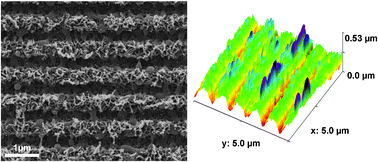
Chem. Soc. Rev., 2012,41, 5117-5130
https://doi.org/10.1039/C2CS15345A
Proton transport in functionalised additives for PEM fuel cells: contributions from atomistic simulations
Computer simulations enhance the understanding of proton transport mechanisms in materials science as demonstrated for additives to polymer electrolyte membranes.
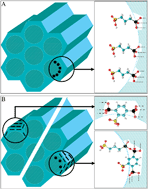
Chem. Soc. Rev., 2012,41, 5143-5159
https://doi.org/10.1039/C2CS15322J
Interface phenomena in (super)hard nitride nanocomposites: from coatings to bulk materials
Partial coherence of face centred cubic (Ti,Al)N and wurtzitic AlN.
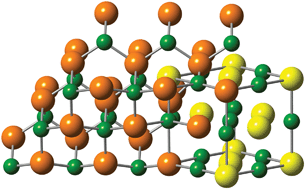
Chem. Soc. Rev., 2012,41, 5081-5101
https://doi.org/10.1039/C2CS15351C
Developments in nanostructured LiMPO4 (M = Fe, Co, Ni, Mn) composites based on three dimensional carbon architecture
Dramatic enhancement in electrochemical performances of the Li-ion battery can be achieved by reconfiguring the electrode materials into 3-D architectures.
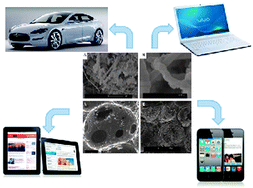
Chem. Soc. Rev., 2012,41, 5068-5080
https://doi.org/10.1039/C2CS15320C
Silicon-containing polymer -derived ceramic nanocomposites (PDC-NCs): preparative approaches and properties
PDC-NCs are synthesized via polymer-to-ceramic conversion of suitable single-source precursors, leading in a first step to amorphous single-phase ceramics, which subsequently undergo phase separation and crystallization processes to furnish bi- or multiphase ceramic nanocomposites. This review paper presents different preparative approaches for PDC-NCs as well as some of their properties.
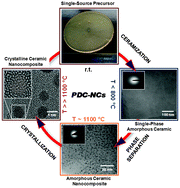
Chem. Soc. Rev., 2012,41, 5032-5052
https://doi.org/10.1039/C2CS15319J
Fabrication and characterization of nanostructured titania films with integrated function from inorganic–organic hybrid materials
This tutorial review highlights the improvements in titania nanostructure fabrication and characterization from inorganic–organic hybrid materials for photovoltaic applications.
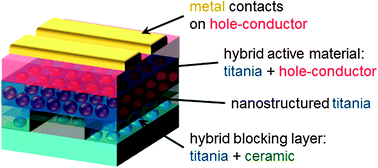
Chem. Soc. Rev., 2012,41, 5131-5142
https://doi.org/10.1039/C2CS15321A
Preparation and application of cellular and nanoporous carbides
A tutorial review on cellular as well as nanoporous carbides covering their structure, synthesis and potential applications.
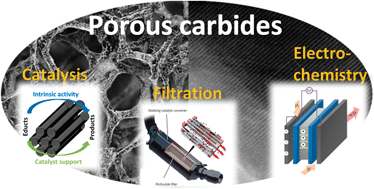
Chem. Soc. Rev., 2012,41, 5053-5067
https://doi.org/10.1039/C2CS15324F
Polymer derived non-oxide ceramics modified with late transition metals
A review of the synthesis, morphology, composition and applications of polymer derived non-oxide ceramics (SiCN and SiC) modified with late transition metals is presented.
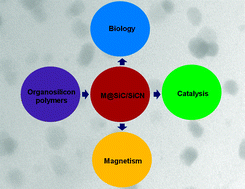
Chem. Soc. Rev., 2012,41, 5102-5116
https://doi.org/10.1039/C2CS15326B
High surface area crystalline titanium dioxide: potential and limits in electrochemical energy storage and catalysis
This critical review summarizes recent advances in the synthesis of crystalline nanoscale titania via low temperature solvent-based protocols and emphasizes the application of such nanomaterials in heterogeneous catalysis and electrochemical energy storage.
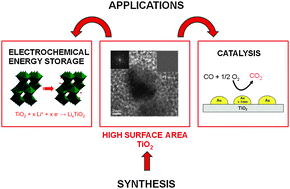
Chem. Soc. Rev., 2012,41, 5313-5360
https://doi.org/10.1039/C2CS35013K
Assembly of one dimensional inorganic nanostructures into functional 2D and 3D architectures. Synthesis, arrangement and functionality
This review will focus on the synthesis, arrangement, structural assembly, for current and future applications, of 1D nanomaterials (tubes, wires, rods) in 2D and 3D ordered arrangements.
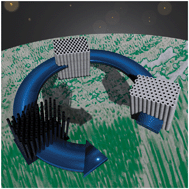
Chem. Soc. Rev., 2012,41, 5285-5312
https://doi.org/10.1039/C2CS35089K
About this collection
In this special issue you will find a series of articles focused on inorganic nanomaterials synthesized by molecular precursors. The research studies reported here have been financially supported by the German Science Foundation (DFG), Bonn, Germany, in the frame of a so-called “Priority-Programme” SPP 1181 entitled “Nanoscaled Inorganic Materials by Molecular Design: New Materials for Advanced Technologies”. This research programme was funded between 2005 and 2011 with a total budget of €8 million. The interdisciplinary research team included natural scientists as well as mechanical engineers and was comprised of ca. 30 principal investigators from various German Universities working on more than ten different topics related to nanoscaled inorganic materials.
The aim of this priority programme was to develop concepts for the production of novel multifunctional inorganic materials with a tailor-made nanoscaled structure. Industrial demands on future technologies have created a need for new material properties which exceed by far those of materials known today and which can only be produced by designing the material structure at a nanoscale. Furthermore, the increasing miniaturisation of components calls for new process technologies allowing reliable production of materials at and below a micrometre scale. In particular inorganic-organic hybrid materials as well as amorphous and polycrystalline ceramics are to be used as material classes and produced by means of cross-linking routes in various states of condensation. In accordance with the so-called “bottom-up” approach, specific inorganic molecules are to be assigned to higher molecular networks and solid-state structures in the form of molecular nanotools by means of condensation and polymerisation processes. This method aims at linking organic components to inorganic structures producing materials inaccessible by thermodynamically controlled chemical syntheses. Therefore, the experimental studies were focused on the development of solids derived from molecular units via kinetically controlled synthesis processes in the interface between molecular and solid-state chemistry enabling specific adjustments to the solid-state properties. Thus, the ultimate objective of the priority programme was to systematically study the “bottom-up” approach with regard to the synthesis and exploration of novel materials in order to establish the technological fundamentals for the development of these new materials and their potential use. Possible fields of application for materials produced at a nanoscale are key technologies of the 21st century such as transport systems, information technology, energy as well as environmental systems and micro or nano electromechanical systems. The correlation between the structure of the molecular precursors and the nanostructure of the derived materials and their properties provided the focal point for the detailed experimental studies reported here.